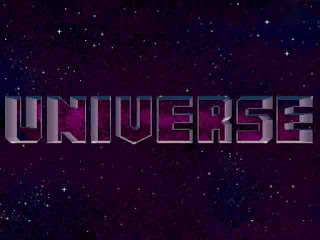The early 90s was a golden age for the point 'n click adventure, with LucasArts and Sierra being the envy of every other publisher. Core Design, the developer who'd later give us Tomb Raider, entered the ring in 1992 with Curse of Enchantia.
If you put Enchantia's screenshots next to anything LucasArts or Sierra put out in 1992 and the level of artistry involved becomes apparent. The visuals outshine or at the very least equals either company's biggest contemporary games. The often rotoscoped animations are as smooth as the ancient hardware would allow and the character designs are unique and entertaining. Next to Indiana Jones and the Fate of Atlantis and King's Quest VI as well as being one of the first games to also come on CD-ROM, Core would surely have an evergreen blockbuster on their hands, right?
Wrong. While the game sold well and made a lot of money, practically everything else in this adventure leaves a lot to be desired. For one thing, the plot is almost non-existent. An evil unnamed witch had zapped a young boy named Brad (you) into her fantastical alternative dimension. The reason? To use him in a potion for eternal youth. I know this because I read the manual. The game itself, which has little dialogue and no conversations or cutscenes at all, tells us next to nothing. All the information is told visually if at all, making for an oddly detached experience.
A lack of dialogue is not necessarily a bad thing. In film, entire scenes can be conveyed without a single utterance, yet any motivations can still be understood. In Citizen Kane, Orson Wells famously eschewed an entire page of dialogue in favour of a simple look, and channels more emotion than words ever could. The Curse of Enchantia, either due to technical or artistic limitations, doesn't do this at all. Not once through roughly the two-hours of play did I connect with any character, even the one I was controlling, and therefore found it a struggle to get through.
There are also a lot of strange design choices going against it. The game has been designed around a variety of control options, including a joystick and a keyboard, though I played it using the preferred mouse option. The other two options will control Brad directly like an action game. The consequence of this is that items are not interacted with directly using the mouse. Instead, if you wanted to pick up the key, for example, you'd first need to position yourself near the item, then right-click to bring up the icon menu. From here point your cursor over to the 'pick-up' icon, and then select the icon of the object you want to pick up. If you can't see said icon, it's either non-interactive or you're not quite in the right position. Thankfully, it's pretty forgiving in where you need to stand, but it's still incredibly awkward. Don't get me started on how to use an item.
The band of icons are in keeping with the no-text mantra. It can take a bit of guesswork to understand each symbol, but after some initial trial and error, it's not too hard - just like the game itself. Like the LucasArts classics, there's no dying in the game. This was apparently mandated halfway through production, and it shows. The world is filled with traps and the occasional action sequence, but instead of dying, you're treated to an often entertaining slapstick sequence. It appears that Brad is as immortal as an accident-prone Looney Toons character. I actually prefer this decision over the randomly perilous worlds of Sierra's adventures. You don't have to worry about saving your game for fear of dying. The downside to this is that it makes the game's story tensionless by softening the only given plot point - a witch wants to kill you for your life essence. It even makes the action scenes pointless. They mostly consist of avoiding obstacles or projectiles (or reflecting them on occasion), but now that you can continue a mere second after getting hit, they're so inconsequential they can't even be seen as an annoyance.
Despite my misgivings, the game was much praised in the gaming press at the time. Even those who brought up the flaws tended to rate it highly. Had they spent more time including a preferably decent script then maybe the naff control scheme could be overlooked. Perhaps the reverse could also be true. As it is, I can't say The Curse of Enchantia is anything more than an average adventure with top tier graphics.

To download the game, follow the link below. This custom installer exclusive to The Collection Chamber uses DOSBox to bring the game to modern systems. Manual included. Tested on Windows Windows 10.
31.12.2020 - Ver.2 - Updated to DOSBox v0.7.3
Updated installer
File Size: 13.5 Mb. Install Size: 18.2 Mb. Need help? Consult the Collection Chamber FAQ
Download
Curse of Enchantia is © Core Design
Review, Cover Design and Installer created by me










Anybody else have a problem with this one? I've been playing just fine through this but then when I got to the door in the valley of the lost, the game crashes. Is there something I should change?
ReplyDeleteI just updated to a newer version of DOSBox and did a complete play through. I don't know what caused your issue, but the new version is definitely completeable.
Delete